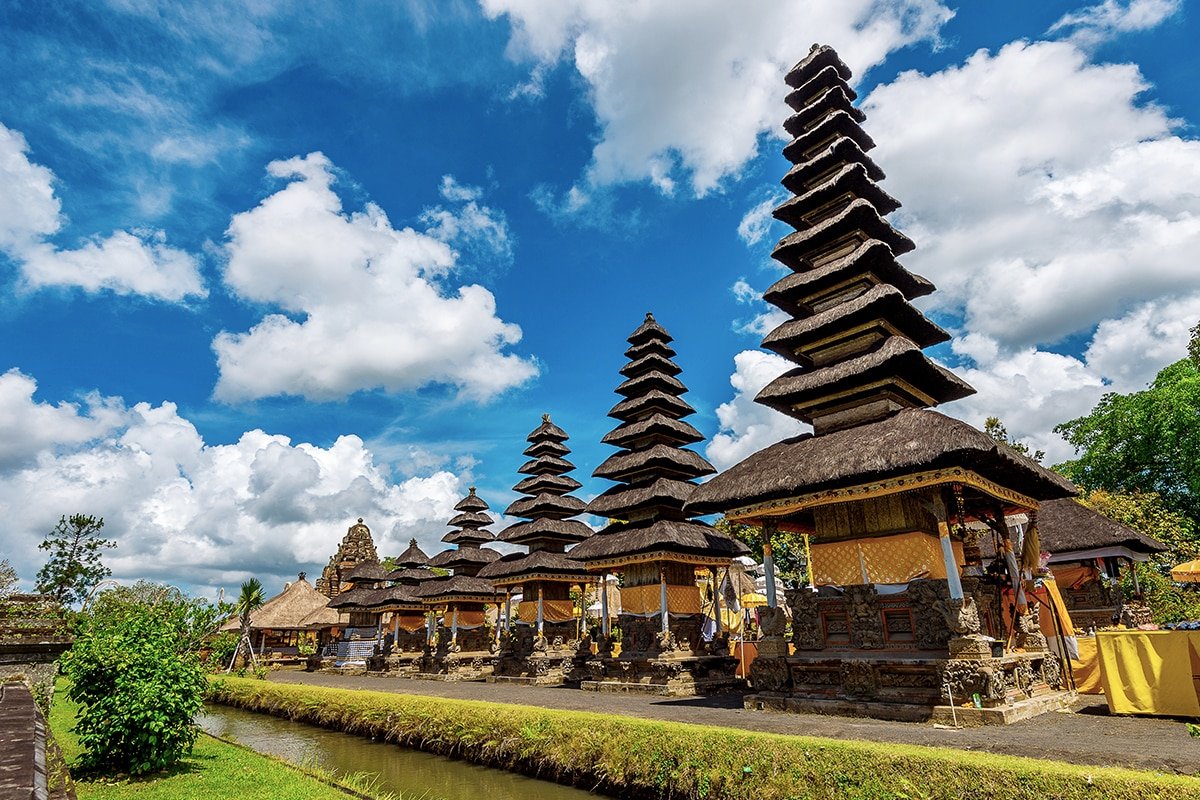Taman Ayun Temple, located in Badung Regency, Bali, has become one of the island’s primary tourist destinations.
It is especially popular among international travelers visiting Bali during the year-end holiday season. Taman Ayun is also recognized as a UNESCO World Heritage Site, adding to its global significance.
Situated in Mengwi Village, Taman Ayun Temple offers a serene and refreshing natural landscape. The tourism spot is surrounded by clear ponds and lush greenery, providing a deeply spiritual experience and tranquility for its visitors.
World Heritage List
In 2002, the Bali Provincial Government proposed Taman Ayun Temple to be included on the UNESCO World Heritage List.
In 2012, the temple was officially recognized as a World Heritage Site by UNESCO, further enhancing its historical and cultural value.
The temple was built in 1556 Saka (around 1634 AD) by the King of Mengwi, I Gusti Agung Putu, as a place of worship to honor his royal ancestors and pray for blessings and prosperity.
As one of the largest temples in Bali, Taman Ayun Temple offers a remarkable religious tourism experience.
Taman Ayun Temple is divided into several sections, from the outer courtyard to the 3 inner courtyards.
The outer courtyard is located on the outside of the pond, with a bridge crossing over the water leading to the main entrance gate, a magnificent gapura. The first courtyard features a pond full of lotus flowers, with a monument that sends water flowing in 9 directions.
Declining Visitors
According to temple management, the number of visitors has declined compared to the previous year, with an average of around 300 daily visitors, compared to last year’s peak of 500 visitors per day during the holiday season.
Tour guide Mrs Metri explains that the decrease in foreign tourists during the year-end holidays is due to their preference for summer vacations between June and September.
Meanwhile, domestic tourists have increasingly visited Taman Ayun Temple during the end-of-year holidays.
The entrance fee for Taman Ayun Temple is IDR 30,000 for foreign tourists and IDR 15,000 for domestic visitors.
Before entering the temple grounds, visitors are required to wear kamen or a sarong as a sign of respect for this sacred site. Women who are menstruating are only allowed to visit the wantilan area.
With its rich history and breathtaking natural scenery, Taman Ayun Temple remains an essential destination for any Bali itinerary.
Source: Beritasatu
Image: via Indonesia Travel

